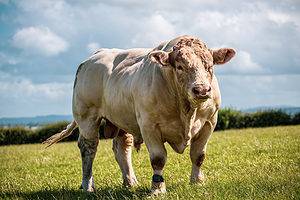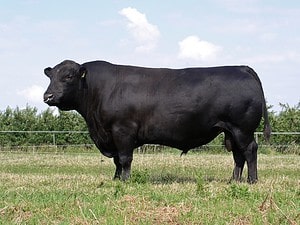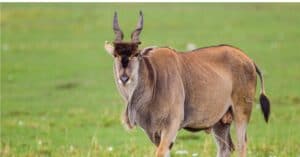Wagyu beef, pronounced “WAH-gyu,” is one of the most sought-after meats. It’s known for its stunning marbling and mouthwatering taste. But what is it? Find the answer to “What is Wagyu beef?” and 10 facts you should know about this expensive cut of meat.
What Is Wagyu Beef
So, what is Wagyu beef? To start, Wagyu beef is a type of high-quality beef from Japan. It earned a reputation for its exceptional marbling, tenderness, and exclusivity. It has a distinct taste and texture that many believe is worth the expensive price. The cattle are meticulously bred and follow a tradition that prioritizes their well-being over mass production, which contributes to the unique qualities of the meat.
Ready to learn more about what makes this expensive meat so unique? Keep reading to find out.
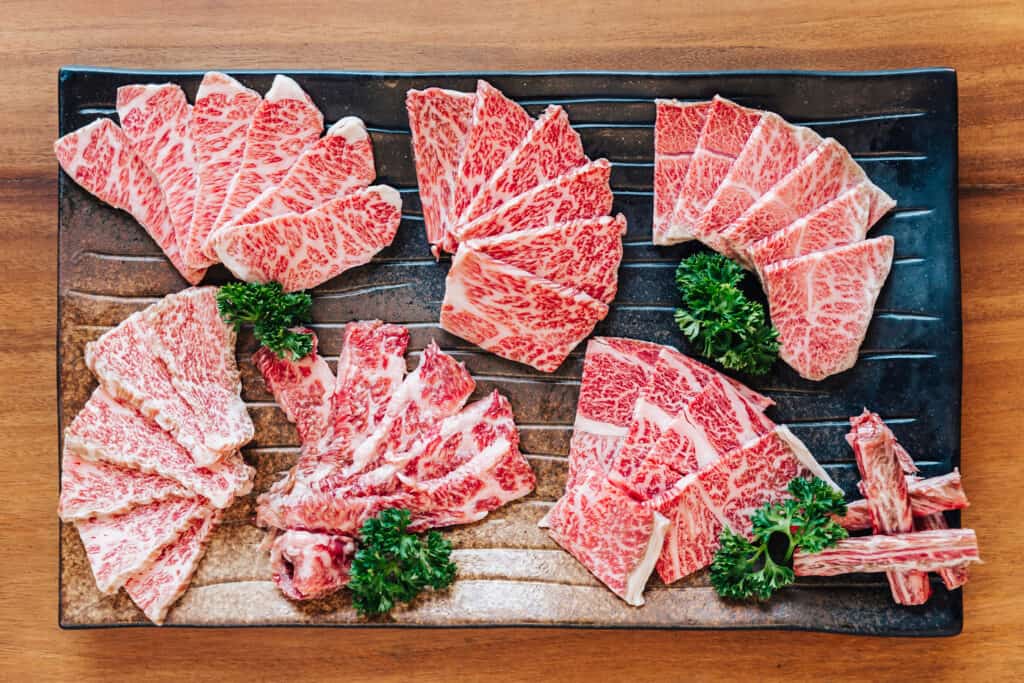
The beef cuts are prized for their uniformity, texture, and juiciness.
©Artit Wongpradu/Shutterstock.com
10 Things You Should Know About Wagyu Beef
1. It Comes Exclusively From Japan
Wagyu translates to “Japanese Cow.” “Wa” translates to Japanese, while “gyu” is the word for cow or cattle. Authentic Wagyu is sourced exclusively from Japan. In fact, Japan started an export ban on cattle in 1997 to keep these cows in Japan and retain control over the lineage. However, the meat comes from four breeds of cattle – the Kuroge, Aakage, Nihon Tanaku, and Mukaku. Though cattle in countries including Australia and the U.S. are crossbred with some of these breeds, no authentic Wagyu is produced anywhere outside Japan.
2. Wagyu Beef Is Expensive
The second most popular question regarding this meat is, “Why is Wagyu beef so expensive?” Wagyu beef is more expensive than other meats because the cattle are pricey, and it takes longer to raise them. In the U.S., it’s common for cattle to be slaughtered at 15-20 months, which is much sooner than Wagyu cattle. Instead, they often reach 30 months or older before they are slaughtered.
Japanese farmers allow Wagyu cattle to age because it’s believed that a longer life leads to a better flavor. Additionally, a larger cow produces more meat. That way, farmers make more money off more quality cuts. They’re also in a much shorter supply than standard cattle. Therefore, farmers need to spend more time and money ensuring their cattle are adequately cared for if they want to meet quality standards.
3. The Cattle Lineage Is Carefully Followed
Authentic Wagyu only comes from Kuroge cattle, therefore cattle lineages are carefully followed. Wagyu cattle breeders often sell the cows to farmers when they hit 10 months. Along with the sale, farmers are given birth certificates to verify the bloodline of the cattle. To keep track of every cattle lineage, there is a grading and tracking system breeders and farmers follow. Every cow is identified through their documented nose print and a unique 10-digit ID number associated with their lineage, birth, farm, and other important information.
4. Wagyu Cattle Have a Strict Diet
Wagyu cattle breeders follow a strict diet and raise their cows in a comfortable environment. Unlike most American cattle, they don’t exclusively eat hay. Instead, they eat green grass, rice straw, whole crops, okra, legumes, and soybeans. They also get supplements like vitamins and calcium to keep them healthy.
According to the diet, cattle are fed three times a day, so they gain about 2.5 pounds daily. Farmers follow this diet until they reach 30 months or weigh 1,500 pounds. They also receive a high-energy diet for 600-700 days, which requires a lot of time and resources but contributes to the unique marbling of their meat. Wagyu cattle are also kept in a low-stress environment with room to graze and small herd sizes with anywhere between 10-100 cows.
5. Preparation Is Important
Not only does raising the cattle require a particular procedure, so does cooking it. The marbling pattern of Wagyu beef makes it easier to cook, but most professionals recommend cooking it to medium rare to medium. That way, the meat stays juicy and tender as the fat melts throughout the cut. If you cook it yourself, most recipes suggest leaving it out at room temperature for an hour before cooking to ensure the meat cooks evenly. Throughout the process, consider using a heat thermometer to prevent it from overcooking and allow it to fully rest once you have finished cooking for the best results.
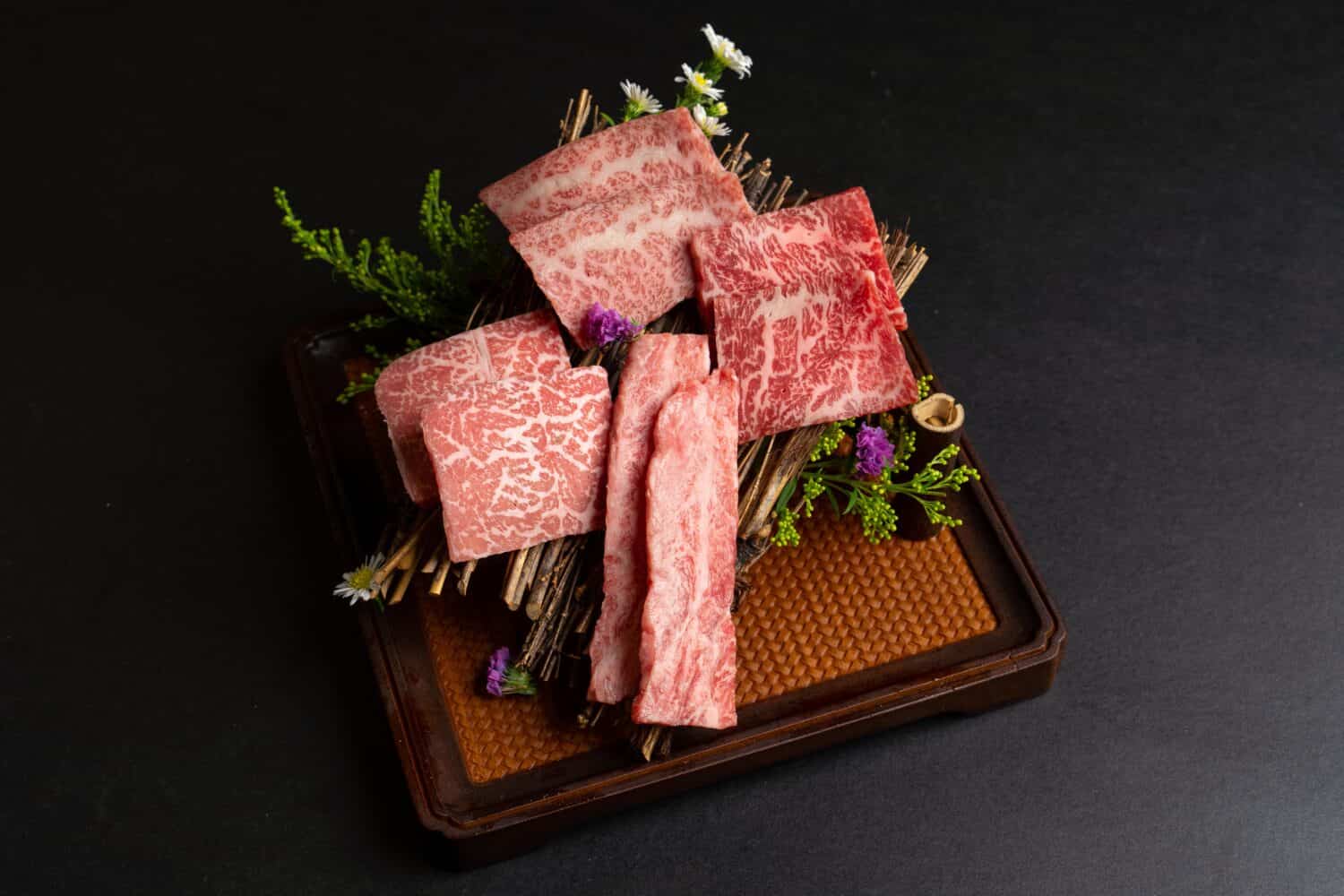
The portion size of A5 grade cuts are 2-3 ounces.
©DannyGan/Shutterstock.com
6. It Has a Unique Taste and Texture
Whether it’s eaten raw or cooked, Wagyu is a culinary treat. The meat is moist and tender and marbled with fat. But according to those who have tried it, the experience is hard to put into words. Although it is similar to other hearty, high-quality meats, the marbling sets it apart from the rest. The fat in Wagyu has a low melting point, giving it its signature buttery texture that essentially melts in your mouth. Since the beef is rich and flavorful, a small cut of meat goes a long way. It’s typically served in small portions intended to be savored. If the cut is A5 grade, the best yield ratio, a portion size is usually 2-3 ounces.
7. It’s Healthier Than Commercial Beef
Not only is Wagyu beef a delicacy, but it’s also one of the healthiest cuts of beef you can eat. The ratio of monounsaturated fat to saturated fat is 2:1, while the ratio of commercial beef is 1:1. The meat is also rich in Omega 3 and Omega 6, offering benefits comparable to those of eating wild salmon. It’s also full of amino acids. However, like most good things in life, it should be enjoyed in moderation.
8. Kobe Beef and Wagyu Aren’t the Same
There’s a common misconception that Kobe beef and Wagyu beef are the same. However, that’s not entirely true. Instead, Kobe beef is a highly prized strain of Wagyu beef called Tajima-Gyu that comes from a specific breed of Wagyu cattle raised in the Hyogo Prefecture of Japan. In fact, the name comes from the capital city of Kobe. This cattle breed is also raised under strict methods but differs from other Wagyu breeds. Kobe is typically more expensive than standard Wagyu because it’s harder to find, considering it only comes from one area.
9. It Has Its Own Olympics
We answered the question, “What is Wagyu beef?” But have you ever heard of the Wagyu Olympics? Probably not. The Wagyu Olympics are held every five years in Japan. It started as the Zenkyo beef competition in 1966. The competition spans over five days and attracts an audience of half a million people. 41 of the 47 Japanese prefectures participate in and organize the event. However, it’s more than a competition. It’s also a chance to receive honor and recognition within this unique field.
The special event has competitors competing in two events: breed improvement and meat quality. There is no prize money for the winners, but there are benefits. Prefectures gain recognition and improve their status in Wagyu perfection. Winning brands also enjoy rising stock and sales increases. At the end of the competition, cattle are also auctioned off to the highest bidders. The last Wagyu Olympics took place in early October 2022 in Kagoshima.
10 . American Wagyu Isn’t Authentic
America has Wagyu beef. However, these cattle are a cross between Wagyu cattle and American cattle, including Angus. It’s also graded by the USDA instead of the Japanese Meat Grading Association. But due to the cross, the beef still offers a fraction of the experience of authentic Wagyu including special marbling and tenderness. Although Wagyu cattle could be raised outside of Japan, it’s the only country that can follow the required guidelines and testing.
The photo featured at the top of this post is © Artit Wongpradu/Shutterstock.com
Thank you for reading! Have some feedback for us? Contact the AZ Animals editorial team.




